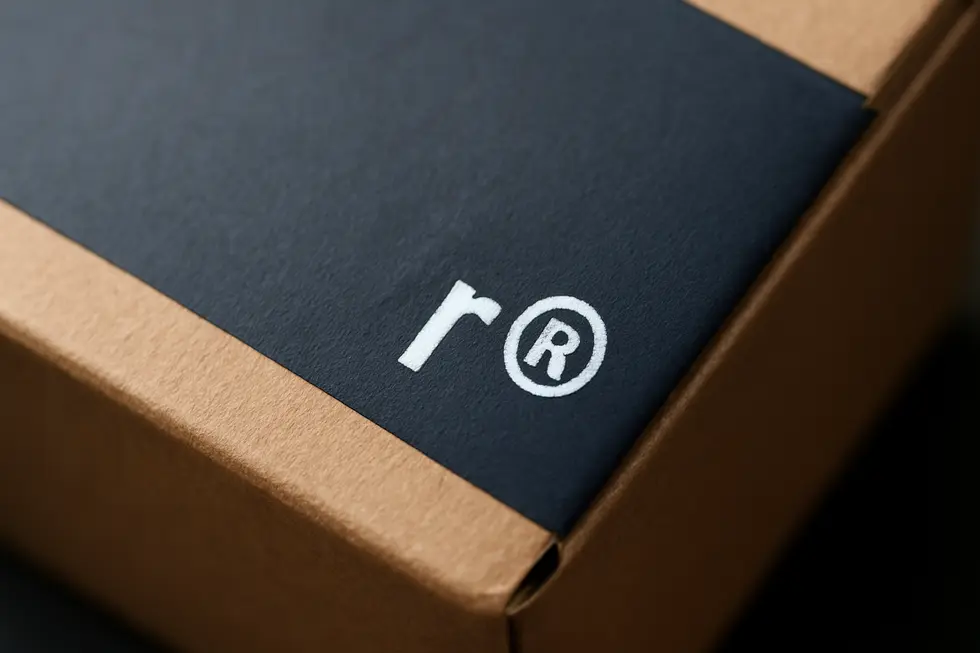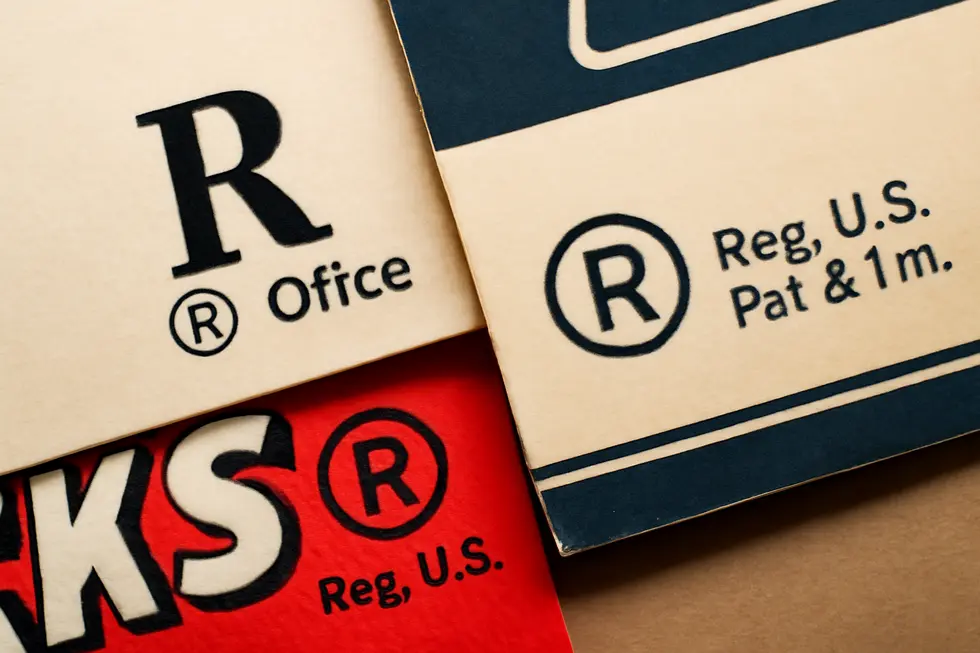Introduction
Successfully managing your registered trademark goes beyond registration—it requires precise and consistent use to ensure legal protection and brand strength. For business owners, understanding how to correctly employ the ® symbol, follow trademark etiquette, and use the mark in connection with registered products or services is crucial. This knowledge not only reinforces your exclusive rights but also deters infringement and supports stronger legal standing. Each chapter of this guide delves into key aspects of registered trademark usage: placing the ® symbol correctly, adhering to trademark etiquette, restricting use to registered goods or services, leveraging registered marks for ultimate legal protection, and exploring alternative legal notices. Together, these insights form a comprehensive framework for using your registered trademark effectively, protecting your brand’s value and reputation.
Tables of Contents
Chapter 1: How to Use Registered Trademark Symbols Correctly
- Mastering the Precise Placement and Legal Importance of the ® Symbol
- Ensuring Trademark Distinctiveness Through Proper ® Symbol Usage and Standards
- Mastering Trademark Notices and Documentation for Registered Marks
- Mastering Proper Use of the ® Symbol to Protect Your Trademark Rights
Chapter 2: How to Use Registered Trademark with Proper Trademark Etiquette
- Mastering the Registered Trademark Symbol: Essential Etiquette and Precise Placement
- Mastering Grammatical Precision and Context for Registered Trademark Use
- Maintaining Trademark Integrity through Consistent Use and Legal Controls
- Preventing Misuse and Dilution: Maintaining the Integrity of Your Registered Trademark
Chapter 3: Ensuring Proper Trademark Use Within Registered Goods and Services
- Maintaining Legal Integrity by Using Registered Trademarks Only on Approved Products and Services
- Ensuring Trademark Protection Through Consistent Use with Registered Goods and Services
- Expanding Trademark Use Legally: Safeguarding Rights When Entering New Product or Service Categories
- Guarding Brand Integrity: Preventing Trademark Dilution Through Precise Use with Registered Goods and Services
Chapter 4: How to Use Registered Trademark to Maximize Legal Protection
- Harnessing the ® Symbol: A Legal Signal That Strengthens Trademark Rights and Deters Infringement
- Proactive Trademark Monitoring: Strengthening Legal Defenses Against Unauthorized Use
- Building a Robust Enforcement Framework to Protect Your Registered Trademark
- Sustaining Trademark Strength: Essential Practices for Long-Term Legal and Online Brand Protection
Chapter 5: How to Use Registered Trademark: Alternative Markings and Legal Notices
- Mastering Registered Trademark Use Through Alternative Symbols and Clear Legal Notices
- Understanding the Power of the ® Symbol and Legal Notices in Trademark Use
- Preserving Trademark Rights: The Critical Role of Consistent Use Within Registered Goods and Services
- Effectively Demonstrating Trademark Use in Commerce with Appropriate Markings and Legal Statements
Chapter 1: How to Use Registered Trademark Symbols Correctly

1. Mastering the Precise Placement and Legal Importance of the ® Symbol
Using the registered trademark symbol (®) correctly is essential to assert legal protection and inform the public of your mark’s official status. This symbol must be placed immediately after the registered trademark—whether a word, logo, or slogan—without spacing. While typically set as a superscript in the upper-right corner, this formatting is a convention, not a legal requirement. Crucially, the ® symbol can only appear once federal registration is granted; premature use is prohibited and can lead to penalties. The symbol signals nationwide protection and strengthens ownership claims, contrasting with the ™ symbol used for unregistered trademarks that lack federal registration’s legal benefits. Placement should be clear and consistent to ensure consumer recognition and association with the trademark. Overuse is discouraged; including the ® at the first prominent occurrence suffices. For further guidance on trademark protection and usage, resources like trademark2go.com offer valuable insights. Following these rules safeguards your rights and enhances your trademark’s enforceability.
2. Ensuring Trademark Distinctiveness Through Proper ® Symbol Usage and Standards
Using the registered trademark symbol ® correctly is essential to preserve your brand’s legal strength and distinctiveness. Always place the ® immediately after the trademarked term without a space, often in superscript, to clearly indicate federal registration. This symbol should only be used once registration with the proper office, such as the USPTO, is complete; otherwise, the ™ symbol is appropriate for unregistered marks. Proper trademark use means treating the mark as an adjective modifying a noun—not as a noun or verb—while avoiding plural or possessive forms to maintain legal clarity and brand identity. Consistent, restrained use of ®, especially at first prominent mentions in advertising or packaging, reinforces ownership and helps prevent the trademark from becoming generic. Vigilantly monitoring misuse and enforcing rights safeguards the mark’s value. Adapting branding effectively while respecting these usage standards keeps trademarks strong and protectable over time. For more insights on trademark protection, see trademark protection for business names and logos.
3. Mastering Trademark Notices and Documentation for Registered Marks
Proper use of registered trademark symbols (®) hinges on precise placement, timing, and accompanying notices that reinforce legal protection. The ® symbol should appear immediately after the trademarked name or logo without any spaces, typically in superscript for clarity, though this is not legally mandatory. Crucially, this symbol must only be applied once the trademark is officially registered with the relevant authority, such as the USPTO; prior to registration, the ™ or ℠ symbols denote claimed but unregistered rights. Always use the trademark exactly as registered—unaltered and as an adjective—while maintaining consistent spelling and design to uphold brand identity.
Clear trademark notices must accompany initial uses on products, packaging, or official documents, stating for example “® is a registered trademark of [Owner],” which provides proper legal attribution. Maintaining comprehensive records of registration certificates and usage is vital, as documentation supports enforcement actions if infringement arises. Observing these practices safeguards trademark rights, strengthens brand recognition, and underpins your ability to take legal action in disputes. For related insights on trademark protection, see the detailed guidance on trademark protection for business names and logos.
4. Mastering Proper Use of the ® Symbol to Protect Your Trademark Rights
Using the ® symbol correctly is essential to solidify and enforce your trademark rights. This symbol should only follow a trademark that has completed official registration with the appropriate authority, such as the USPTO. Premature use of ® on unregistered marks can lead to legal penalties and weaken your enforcement position. Instead, unregistered marks should use ™, signaling a claimed but unregistered right without misleading the public. The ® symbol must be placed immediately after the trademarked name, typically in superscript, with no space. Consistency in how the mark and symbol appear across products, packaging, and marketing reinforces its distinctiveness and legal protection. Avoid using the trademark as a noun or verb to prevent genericide and keep your mark strong. Proper use not only deters infringement but also supports quality control when licensing. For further detail on maintaining these protections, explore resources on trademark protection for business names and logos.
Chapter 2: How to Use Registered Trademark with Proper Trademark Etiquette

1. Mastering the Registered Trademark Symbol: Essential Etiquette and Precise Placement
Using the registered trademark symbol ® requires strict adherence to legal and etiquette standards to maintain your mark’s protection. The ® symbol must follow the trademarked name without a space and should only appear after official registration with the relevant trademark office. Premature use can lead to legal issues, so unregistered marks use ™ for trademarks or ℠ for service marks to indicate claimed rights. The trademark itself should always appear exactly as registered, acting as an adjective rather than a noun or verb, and should avoid plural or possessive forms. It’s also important to position the ® symbol clearly, often in superscript but not necessarily, ensuring it is visible yet unobtrusive. Overuse of the symbol in text is discouraged; placing it by the first prominent instance on packaging or marketing materials suffices. A clear trademark notice on first reference reinforces legal notice and helps protect your brand identity effectively. For detailed legal guidance on symbol use, consulting authoritative resources like the Trademark Manual of Examining Procedure is recommended. Further practical advice on trademark protection can be found at trademark2go.com/trademark-protection-business-name-logo/
2. Mastering Grammatical Precision and Context for Registered Trademark Use
Using a registered trademark correctly extends beyond merely adding the ® symbol; it requires precise grammatical and contextual adherence to protect its legal status. A registered trademark must function as an adjective modifying a generic noun—not as a noun or verb itself—to maintain its distinctiveness. For example, instead of saying just the trademark name, pair it with the product type like “BrandX® software” to avoid genericide. Avoid pluralizing or creating possessive forms of the mark, as this dilutes its distinctiveness and may undermine legal protections.
Contextually, the trademark’s use must strictly align with the goods or services registered. Employing the trademark outside its approved categories risks cancellation or weakening of enforcement rights. Additionally, avoid implying endorsement or sponsorship by using the mark in company names, domain names, or unauthorized advertising claims. Consistency and precision in identifying the trademark’s associated goods or services uphold respect for the mark and reinforce its legal strength.
For a deeper understanding of trademark protection principles, consider exploring trademark protection strategies for business names and logos.
3. Maintaining Trademark Integrity through Consistent Use and Legal Controls
Proper use of a registered trademark demands unwavering consistency and strict legal compliance to safeguard its value and legal protection. Central to this is limiting the trademark’s application exclusively to the products or services specified in its registration. Extending usage beyond these boundaries risks weakening or losing trademark rights. Equally important is enforcing rigorous quality standards for any licensees or partners, ensuring that the trademark symbolizes consistent quality and brand reputation. Active monitoring for infringement or improper use—both offline and online—allows trademark owners to respond promptly and protect their exclusive rights. The registered ® symbol reinforces this protection, marking official registration and deterring misuse. Educating stakeholders on appropriate trademark usage further prevents dilution and counterfeit risks. Partnering with experienced trademark counsel provides essential guidance on quality control, enforcement, and licensing strategies. Together, these measures uphold proper trademark etiquette and preserve the trademark’s legal strength and distinctiveness. For additional insights on trademark protection strategies, see trademark protection business name logo.
4. Preventing Misuse and Dilution: Maintaining the Integrity of Your Registered Trademark
To preserve the distinctiveness and legal strength of a registered trademark, consistent and precise use is paramount. Always display the trademark exactly as registered, without altering its spelling, format, or logo. Applying the ® symbol solely after official registration signals robust protection and deters infringement. Crucially, the trademark must be used only on the specific goods or services for which it is registered; usage beyond this scope risks cancellation or weakening of rights. Vigilant monitoring of unauthorized use, coupled with prompt enforcement through cease-and-desist actions, defends the trademark’s value. When licensing, strict quality control ensures partners maintain brand standards, preventing dilution. Educating consumers and partners about authentic marks further safeguards the brand’s reputation. These measures collectively uphold proper trademark etiquette, protecting your trademark’s integrity and exclusive rights. For more guidance on protecting brand identity, see trademark protection for business name and logo.
Chapter 3: Ensuring Proper Trademark Use Within Registered Goods and Services

1. Maintaining Legal Integrity by Using Registered Trademarks Only on Approved Products and Services
To uphold the validity and protection of a registered trademark, it must be used exclusively in connection with the specific goods or services covered by its registration. Trademark law mandates consistent use within the designated categories; deploying the mark on unrelated items risks weakening or losing legal rights. Continuous commercial use is essential—non-use, typically for three years, can result in cancellation. When licensing a trademark, quality control over the licensee’s use is crucial to preserve the mark’s reputation and avoid dilution. Expanding the trademark’s use beyond its registration scope requires acquiring new registrations for the added goods or services. Careful initial classification balances protection with future business growth. Proper adherence to these principles ensures the trademark’s enforceability and strengthens legal remedies against infringement. For more insights on protecting your brand identity and trademark use, refer to trademark use and protection guidance.
2. Ensuring Trademark Protection Through Consistent Use with Registered Goods and Services
Maintaining the strength of a registered trademark depends heavily on its consistent use exclusively with the goods or services for which it was registered. This alignment preserves registration integrity and guards against legal challenges that may arise from misuse. Using your trademark on unrelated products or services risks losing valuable rights, as such actions could suggest abandonment or dilution of the mark.
Clear and enforced brand guidelines ensure every application—from product packaging to marketing materials—reflects the trademark’s registered scope. Educating your team and partners reinforces this discipline, emphasizing that the trademark should function as an adjective tied only to authorized goods or services. Active monitoring is crucial to identify unauthorized or improper use in the marketplace, allowing timely enforcement to prevent erosion of trademark value.
Moreover, maintaining accurate records of trademark use and timely renewing registrations safeguards ongoing protection. By following these disciplined practices, trademark owners can confidently uphold legal protections and enhance long-term brand value.
For a thorough approach to trademark protection, see this guide on trademark protection for business names and logos.
3. Expanding Trademark Use Legally: Safeguarding Rights When Entering New Product or Service Categories
Expanding the use of a registered trademark beyond its original categories requires cautious navigation to maintain legal protection. Trademark rights are strictly tied to specific goods or services registered with the trademark office. To lawfully introduce a trademark to new categories, the mark must either be used on goods or services closely related to the registered ones or a new trademark application must be filed for those additional categories. This ensures exclusive rights and preserves the validity of the original registration.
Before expanding, thorough trademark clearance searches are crucial to avoid conflicts with pre-existing marks in the desired categories. Consistent and proper use within registered classes helps prevent cancellation risks linked to non-use or inappropriate expansion. Additionally, brand owners should consider variations or translations of their trademark in new markets, filing accordingly.
This disciplined approach balances strategic brand growth with legal safeguards, preventing infringement issues and strengthening trademark enforceability. For detailed trademark protection strategies, resources like the guidance on trademark protection for business names and logos offer valuable insights.
4. Guarding Brand Integrity: Preventing Trademark Dilution Through Precise Use with Registered Goods and Services
To safeguard your brand’s distinctive character, it is crucial to use a registered trademark exclusively with the goods or services for which it was registered. Applying the trademark beyond these specific categories risks diluting its uniqueness and can imperil its legal protection. Consistent use within the approved classifications maintains the trademark’s strength and upholds its commercial value. Marketing and branding efforts should strictly align with the registered scope, avoiding unauthorized expansion without proper application. Properly displaying the ® symbol reinforces exclusivity while educating all involved in promoting the brand ensures compliance with trademark guidelines. Additionally, vigilant monitoring for unauthorized or improper use helps preserve the mark’s distinctiveness and prevents weakening due to misuse. Following these practices prevents dilution, strengthens your legal position, and supports lasting brand recognition. For insightful strategies on trademark protection in business, see trademark protection guidance for business names and logos.
Chapter 4: How to Use Registered Trademark to Maximize Legal Protection

1. Harnessing the ® Symbol: A Legal Signal That Strengthens Trademark Rights and Deters Infringement
The ® symbol plays a critical role in maximizing legal protection for a registered trademark. It must be used only after federal registration is complete, signaling public notice that the mark is officially registered with the U.S. Patent and Trademark Office (USPTO). Placing the ® symbol immediately after the trademark clearly associates the mark with its registered status, deterring potential infringers by demonstrating enforceable rights. This symbolic notice is not just a formality; under U.S. law, it can influence court decisions and is often necessary to recover damages in infringement disputes. Consistent use of the ® symbol on packaging, advertising, and official materials communicates brand credibility and ownership. Supplementing the symbol with statutory language like “Registered in U.S. Patent and Trademark Office” can further clarify rights. Documenting usage supports legal claims of actual notice, enhancing enforcement strategies. Properly leveraging the ® symbol thus conveys exclusive ownership, helping protect your brand against unauthorized use and strengthening your legal position. For comprehensive trademark protection practices, consult trusted resources on trademark enforcement and symbol usage.
2. Proactive Trademark Monitoring: Strengthening Legal Defenses Against Unauthorized Use
Proactive trademark monitoring is key to maximizing the legal protection afforded by a registered trademark. It involves ongoing surveillance of marketplaces, both digital and physical, to quickly identify unauthorized or confusingly similar uses of your mark. Utilizing AI-powered tools, such as keyword and image recognition software, enhances detection accuracy by scanning ecommerce sites, social media, and trademark databases in real time. Early identification of infringement enables swift actions like cease-and-desist letters or oppositions, which are more efficient and cost-effective than litigation after damage accrues. Enforcing your trademark consistently prevents weakening of rights and guards against genericide, preserving exclusivity and brand value. Integrating advanced technology and specialized monitoring services ensures continuous vigilance. This proactive stance not only detects potential threats promptly but also establishes evidenced grounds for enforcement, fortifying your position against infringement and unauthorized use. For further insight, see guidance on trademark protection for business names and logos.
3. Building a Robust Enforcement Framework to Protect Your Registered Trademark
Protecting a registered trademark requires a proactive, well-coordinated enforcement framework that blends ongoing market vigilance with decisive legal action. Continuous monitoring of physical and digital marketplaces, including social media and major e-commerce platforms, helps detect unauthorized use or counterfeit products early. Registering your trademark with customs empowers border officials to intercept infringing goods, strengthening cross-border protection. When violations arise, delivering precise cease-and-desist letters establishes clear boundaries, while pursuing legal injunctions or damages safeguards your brand’s integrity and market position. A focused approach prioritizes high-risk infringements to allocate resources efficiently, ensuring swift responses to emerging threats. Utilizing digital legal tools like takedown notices under the Digital Millennium Copyright Act further extends protection in online environments. This layered strategy, integrating prevention, detection, and enforcement, fortifies your trademark’s exclusivity and maximizes its legal defenses. For expert advice tailored to specific needs and jurisdictions, consulting a trademark specialist is advisable. Learn more about trademark enforcement through comprehensive resources available at trademark protection guidance.
4. Sustaining Trademark Strength: Essential Practices for Long-Term Legal and Online Brand Protection
Maintaining a registered trademark’s full legal impact requires diligent, ongoing efforts that transcend initial registration. Consistent use aligned precisely with registered goods and services preserves trademark validity and guards against cancellation. Implementing rigorous quality control over licensees ensures the mark’s distinctiveness and reputation remain intact. Timely filing of USPTO maintenance documents—especially Section 8 and Section 9 declarations—must be monitored carefully to sustain registration rights.
Active marketplace monitoring, including online channels, detects unauthorized use early. Swift enforcement actions, such as cease-and-desist letters, protect your brand’s exclusivity. Registration also solidifies your position in licensing negotiations by clarifying ownership and allowing enforceable quality standards. Educating consumers on authentic trademark features, through visible markers like unique codes or holograms, enhances brand trust and counters counterfeiting.
Legal counsel support and systematic record-keeping fortify protections and streamline compliance. These ongoing measures ensure your registered trademark remains a powerful asset with nationwide coverage and robust legal presumptions, vital in today’s dynamic marketplace.
For additional trademark protection insights, see this detailed guidance on trademark protection for business names and logos.
Chapter 5: How to Use Registered Trademark: Alternative Markings and Legal Notices

1. Mastering Registered Trademark Use Through Alternative Symbols and Clear Legal Notices
Correct use of a registered trademark is essential to maintain its legal strength and consumer recognition. The registered trademark symbol ® should appear immediately next to the mark without spacing, but only after federal registration is complete. Before registration, owners may use ™ for trademarks or ℠ for service marks to assert common law rights without federal protection. Using the mark exactly as registered is critical—avoid changing spelling or converting it into a noun or verb. The mark should always function as an adjective paired with a generic descriptor (for example, “BrandX® protocol”), preserving proper trademark etiquette.
Additionally, including a clear legal notice affirming ownership when the mark first appears strengthens public awareness and legal enforceability. Overusing symbols in text is discouraged; placing ® at the initial mention suffices. Misuse of symbols or marks on unrelated goods risks legal challenges and jeopardizes protection.
By adhering to these practices, trademark owners maximize legal defenses against infringement, ensuring that their marks remain distinct and protected. For further guidance, explore detailed best practices for trademark protection.
2. Understanding the Power of the ® Symbol and Legal Notices in Trademark Use
The ® symbol holds significant legal weight as it explicitly signals that a trademark is federally registered and protected. Placed directly after the trademarked name—commonly as a superscript though not required—the symbol acts as a public declaration of ownership and registration with bodies like the USPTO. This designation not only deters unauthorized use by alerting competitors but also strengthens an owner’s ability to enforce rights in court, including recovering damages. Its use is strictly reserved for marks that have completed official registration, distinguishing them from unregistered trademarks marked with ™ or service marks with ℠, which only offer limited common law rights. Alternatively, textual legal notices such as “Registered in U.S. Patent and Trademark Office” serve as substitutes to convey the trademark’s registered status clearly. Proper positioning of these symbols or notices immediately following the mark ensures clear association and maximizes the notice’s deterrent effect, vital for maintaining protection and preventing infringement. For deeper guidance on trademark protection strategies, consult resourceful materials on trademark law and best practices such as those found at trademark2go.com/trademark-protection-business-name-logo.
3. Preserving Trademark Rights: The Critical Role of Consistent Use Within Registered Goods and Services
Consistent use of a registered trademark specifically within the goods or services for which it is registered is fundamental to maintaining legal protection. Trademark law requires that the mark remain substantially unchanged and clearly linked to its registered categories to avoid cancellation for non-use or significant alteration. This consistency reinforces the trademark’s distinctiveness, which is vital for preventing consumer confusion and for successfully enforcing rights against infringement or dilution.
Commercially, steadfast use builds secondary meaning, enhancing consumer recognition and trust. It protects the trademark owner’s investment by sustaining the brand’s value in the marketplace. Moreover, integrating proper legal markings—such as the ® symbol—alongside consistent use signals the mark’s registered status publicly. This combination maximizes legal deterrence and strengthens potential claims in disputes.
Failure to align trademark use strictly with registered goods or services risks weakening the mark’s legal enforceability and commercial prestige, underscoring why consistency and correct marking practices must work hand in hand. For deeper insight into trademark protection and the importance of use within registered classes, see detailed guidance about trademark protection for business names and logos.
4. Effectively Demonstrating Trademark Use in Commerce with Appropriate Markings and Legal Statements
Properly demonstrating trademark use in commerce is essential to uphold and enforce your rights. The trademark must be visibly connected to the actual goods or services offered continuously and in bona fide commerce, not just as an intent to use. Acceptable specimens include labels, packaging, or tags on products, as well as advertisements, brochures, and service-related materials such as business cards or website content prominently displaying the mark. Using the correct symbol is critical: ™ signals claimed but unregistered marks, while ® indicates federally registered trademarks—this distinction must be respected to avoid legal penalties. Supplementing the trademark with clear legal notices like “® Registered in the U.S. Patent and Trademark Office” reinforces its registered status and deters infringement. Consistent use, careful documentation of specimens, and sales evidence not only support registration but also protect against abandonment. Adhering to these practices ensures your trademark remains a strong legal asset and conveys authoritative notice to the public and competitors alike. For further insights, see guidance on trademark protection for business names and logos.
Final thoughts
Proper use of your registered trademark is a fundamental pillar for building and safeguarding your brand’s identity and value. Applying the ® symbol correctly, respecting trademark etiquette, using the mark solely for registered goods or services, and strategically leveraging legal notices all contribute to maintaining your trademark’s strength and enforceability. Adhering to these principles not only protects your brand from infringement but also reinforces your business’s legal position and market presence. Informed and consistent trademark use empowers business owners to uphold their exclusive rights and maximize their intellectual property’s worth, turning your brand into a legally safeguarded asset for long-term success.
Your IP is the foundation of your success – let’s protect it together before it’s too late. We can’t wait to help you turn your ideas into legally secured assets.
About us
undefined


